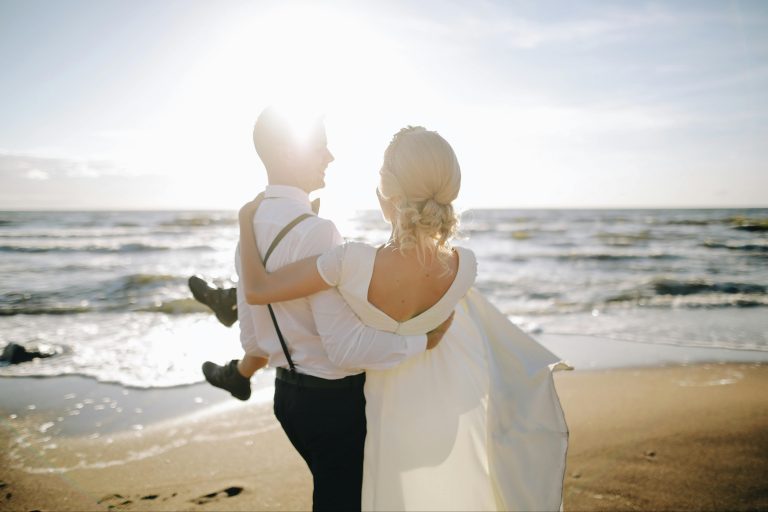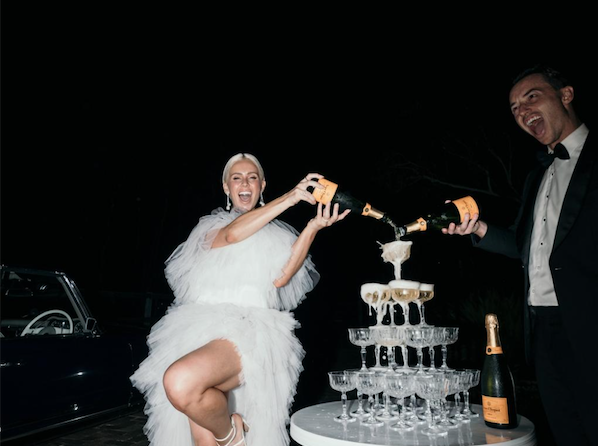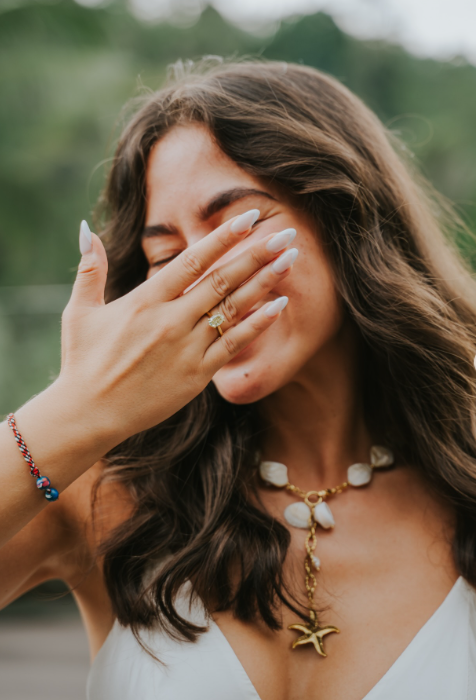Round cakes will forever be classics, but 2025 belongs to the rectangle. Clean lines, modern edges, and a totally fresh silhouette… it’s the cake equivalent of a stylish reboot.
Modern, minimal, completely chic
Rectangular cakes just look contemporary. They photograph beautifully, suit almost any theme, and bring that polished, editorial feel couples are loving right now. Honestly? We can see this trend rolling right into 2026 (at least, we hope so).

A dream for cake artists
The long, flat surface is basically a mood board waiting to happen:
-
soft brushstrokes
-
subtle metallics
-
bold geometric patterns
-
delicate florals
More space means more creativity.

Practical in the best way
Neat slices. Easy serving. Zero fuss. If you have a big guest list, the rectangle has your back. And your caterer will thank you.
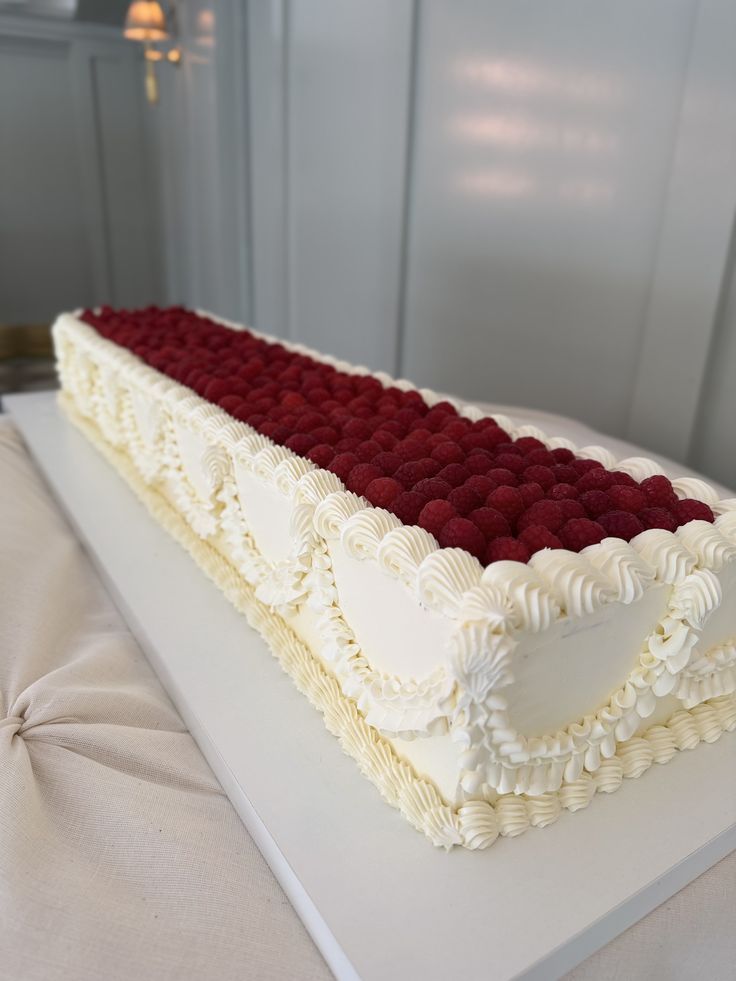
Style it your way
This shape works beautifully with:
-
minimalist white-on-white
-
dramatic colour contrasts
-
vintage piping (loving this comeback)
-
greenery and fresh florals
-
tall, stacked tiers for extra height
It’s versatile without trying too hard.
ALSO SEE: No Cake, No Bouquet Toss, No Rules, Couples Are Reinventing Weddings
No Cake, No Bouquet Toss, No Rules, Couples Are Reinventing Weddings
Feature image: Pinterest/Veranda Flowers
You don’t have to sit on a hill and meditate to de-stress. Although that’s exactly what you’ll want to do after haggling with wedding vendors and explaining to…
We all hope that our wedding day will go off without a hitch, but sometimes mishaps happen. Between wardrobe malfunction to allergic reactions to beauty blunders – it’s all part of the process.
I’m sure we’d all love to be prepared for every scenario our minds can conjure, but this is simply not possible. However, a little preparation goes a long way and adding an emergency kit to your wedding day can be a great way to alleviate stress.
Needle and Thread
Sometimes things tear, and that’s true for bridesmaids and wedding dresses. Having a handy dandy sewing kit is a must when getting ready for your big day, it helps avoid anyone running around looking for a needle and thread.
Shoe Repair Glue
We’re preparing for everything, right? While a tear in a dress is a very real reality, sometimes heels get stuck on things they shouldn’t and give way to gravity. Adding some shoe repair glue into your emergency kit may save you the trouble of re-doing your makeup after your wedding shoe hits a snag.
Double-Sided Wardrobe Tape
Stop necklines from sagging and keep straps covered with this life-saving tool! This magical little took has the ability to tackle wardrobe malfunction by simply peeling and sticking.
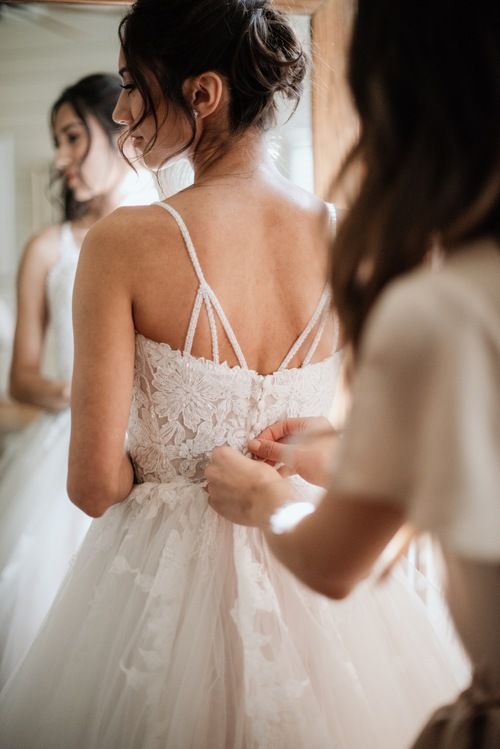
Wine Stain Remover
The drinks are flowing and the guests are getting down on the dance floor. A shove here and a spill there, sometimes white wedding dresses can get stained when having a good time. Not to worry, Takealot has a few good options when it comes to stain removals, especially red wine!
Mini First Aid Kit
Grab a travel-sized first aid kit from your nearest pharmacy or online. These kits are equipped with everything you could need when handling bumps, scratches, and other minor accidents that may derail your day.
ALSO SEE: 5 Breathtaking allergy-friendly florals to add to your wedding!
5 Breathtaking allergy-friendly florals to add to your wedding!
Feature Image: Pexels
You will most likely be stressing about numerous things before your wedding – your skin doesn’t have to be one of them. Here is what not to do…
The first year of marriage is always marital bliss, especially when you have heaps of debt behind your name. While there’s nothing wrong with dreaming up the perfect wedding – bells and whistles included – walking down the aisle doesn’t have to mean walking straight into wedding debt.
Overspending on your wedding day may just cancel out the marital bliss everyone enthusiastically talks about. According to a 2019 study by LendingTree concluded that 45% of newlyweds between the ages of 18 and 53 went into debt to pay for the wedding. And with many South African couples paying between R80 000 – R120 000, as per Standard Bank, it’s no surprise why.
While getting married can be an expensive business, sometimes it helps to stop and think before making a big purchase on Kim Kardashian-esque flower wall.
Trade debt for memories
Sometimes it’s easy to get caught up in the tasks and balance sheets of planning a wedding, but it’s important to remember why everyone is really attending your wedding – love. The food, DJ, wedding photographer, and signature drink are just the cherry on top of your love and commitment cake, and it’s important to keep this at the centre of your planning.
Get on the same page
According to the same 2019 study, nearly 76% of newlyweds who reported they went into debt also stated they argued over wedding-related expenses. The remedy? Bridal couples need to get on the same page when determining what they’re spending their hard-earned cash on. Creating a wedding budget and discussing expense details are two ways for avid debt collectors. If you’re looking to splurge on an open bar, make sure you’re both comfortable with how long it will be “open,” what liquor will be available, and what the total will come to.
Stick to your boundaries
We’ve all heard the phrase: “keeping up with the Joneses,” but sometimes it’s okay to watch them cruise on by. Planning a wedding can feel overwhelming which can easily lead to bridal couples listening to the opinions of others. A great way to avoid being swayed by friends and family members and what they’d like to see at your wedding is by writing down a list of wedding priorities that are important to you and your partner. Consider what is “worth-it” and what is “non-negotiable,” this will provide you with a better foundation with which to smile and say “no, thank you.”
ALSO SEE: 5 Breathtaking allergy-friendly florals to add to your wedding!
5 Breathtaking allergy-friendly florals to add to your wedding!
Feature Image: Pinterest
Not one for the club scene? That’s perfectly acceptable. With all the stress of wedding planning, a nice relaxing weekend with your best girls is a great way…
South African content creator and entrepreneur Nadia Jaftha announced her engagement on the morning of 1 December, sharing a moment that immediately lit up social media with excitement and support.
Jaftha is known for keeping her personal life intentionally private, so for many followers, news of her relationship — and now engagement — to Reece Meyer came as a genuine surprise. The reveal, however, was met with an outpouring of joy, with fans celebrating a milestone they hadn’t anticipated but wholeheartedly embraced.
View this post on Instagram
Nadia and Reece are long-time collaborators, working together as co-founders of ACE Labs and co-owners of The Smile Bar.
A heartfelt congratulations to Nadia and Reece as they begin this new chapter together.
ALSO SEE: The pocket guide for announcing your engagement on social media
The pocket guide for announcing your engagement on social media
Featured image: Nadia Jaftha/Instagram


